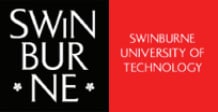Customer Success Story
Students Use MadCap Flare to Learn Online Content Best Practices and Concepts That Apply to DITA
Goals
- Give students hands-on experience applying state-of-the-art Help authoring best practices
- Provide foundation for learning core concepts that will apply to DITA
- Use a future-proof tool
Benefits
- Greater flexibility via support for XHTML and HTML
- Flare's linking and layering features let students learn full gamut of Help authoring techniques
- Flare and DITA similarly separate content from formatting and style
- Cascading Flare stylesheets dovetail with DITA's structured approach
- Flare snippets teach students use of reusable content
MadCap Software Solutions and Services:
Students learn by doing at Swinburne University. Part of Australia's Open Universities program, Swinburne has a strong history of providing quality, career-oriented education for both undergraduates and postgraduates.
That's why Swinburne adopted MadCap Flare 3.0 when it needed a new authoring tool to support its post-graduate technical communications program. Since July 2007, Swinburne has been using Flare as the designated tool for students to learn and apply best practices in its online Help content development course.
Wanted: Future-Proof Authoring Tool
"We established our technical communications certificate and diploma program to meet industry demands and create an opportunity for individuals to choose technical writing as a profession," said Tony Self, a lecturer in the technical communications program at Swinburne University.
By understanding how to develop content in Flare, technical communications professionals can significantly reduce the learning curve of DITA.
Tony Self Lecturer in the Technical Communications Program, Swinburne University
With a focus on meeting businesses' real-world demands, Swinburne balances lectures on best practices with lab projects using established documentation tools. To remain state-of-the-art, the university evaluates its technical communications program and supporting technology every three years.
"In the latest review of our program in 2007, we recognized it was time to change to a more structured Help authoring tool," Mr. Self explained. After evaluating several products on the market, Swinburne chose MadCap Flare 3.0 from MadCap Software and has been using it in the classroom since July 2007.
"We like Flare's fully standards-based architecture and the fact that it can provide output in XHTML, not just the HTML format of older tools," said Mr. Self. "Moreover, the range of linking and layering features in Flare allows students to learn the full gamut of techniques available to Help authors."
Foundation for DITA Practices
The online Help content development course using Flare has proven a good foundation for students planning to take Swinburne's course on the Darwin Information Typing Architecture(DITA), an XML-based approach for designing, writing, managing and publishing information. Mr. Self, who is a member of the DITA Technical Committee and chair of the DITA Help Sub-committee, teaches the new class, which debuted in July 2007 and is the first of its kind.
"DITA is very likely to become the next big thing in content authoring. That is why it's important to be familiar with standards-compliant XML software like Flare, which shares core principles in structured authoring with DITA," Mr. Self explains. "By understanding how to develop content in Flare, technical communications professionals can significantly reduce the learning curve of DITA."
One of the central concepts in DITA that is found in Flare is the separation of content from the style and formatting, says Mr. Self. He notes that the use of cascading style sheets, which are separate from the writing, dovetails nicely with DITA's structured approach. He adds that another important concept is reusable content, which in Flare is realized through the use of snippets.
"And because Flare is more structured," Mr. Self says, "Authors can be assured that they will always be able to move forward seamlessly with the introduction of new technologies and architectures such as DITA."





